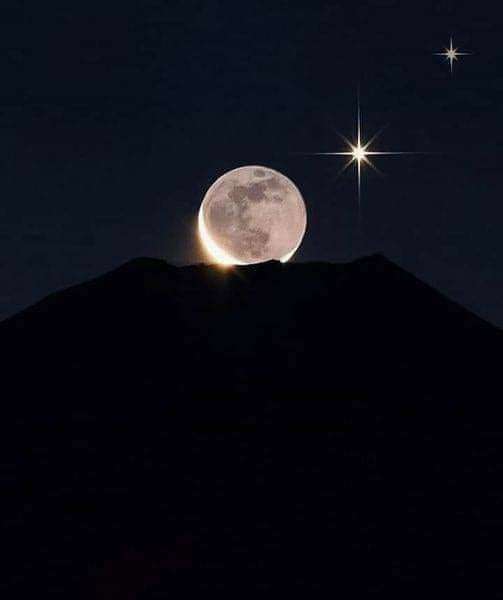
EdenBuch
CommunityForum Replies Created
-
 13
13
 92
92
 1
1
 0
0
 0
0
Hello !
So, first thing you need to know is that a telescope is a bucket of light, the bigger it is, the more light you can capture, the more you can see (well, mostly). With that in mind, there are 4 big factors you need to take into account :
1) The type of optics :
There are 2 principal types of optics, refractors and reflectors, refractors use lenses to focus light into your eyepiece (we’ll get back to that) and eventually into your eye. they are usually expensive if you want good quality because they need to be Apochromatics to avoid chromatic aberrations (colorfull shapes around a star, usually purple), they are mostly used for astrophotography. Reflectors are composed of 2 mirrors, one is called the primary mirror, it’s at the back of the tube and usually parabolic. The light reflects on the primary mirror, is reflected on the secondary mirror at the entrance of the telescope and into your eyepiece. Reflectors are usually cheaper but bigger, they are perfect for visual astronomy. (1st image is a reflector, 2nd is a refractor)
2) The type of mount :
There are 2 types of way of moving your telescope, one is called equatorial, the mount is on a tripod and it moves in 2 different ways, one move your telescope from left to right ( and the other way around too, obviously ) around a fixed point,the other way follows the movement of the sky (going in circles around polaris) it is meant for astrophotography (<b style=”font-family: inherit; font-size: inherit;”>DO NOT buy an equatorial mount if you intend to do visual astronomy, these types of mount need to be aligned on polaris, it’s annoying, it takes time (often in the cold) and after 2 times of using an hour of your time doing it, you’ll end up ploping it down approximately near polaris, it ruins the whole goal of this mount (I speak of experience for this one)). The other type is called Alt-Az, it moves up and down and right and left (one at a time, so to go higher left, go up until you’re levelled with what you want to see, then go left until you’re right on your target, it works kind of like a stair). It’s not recommended for astrophotography but it is <i style=”font-family: inherit; font-size: inherit;”>perfect for visual. Now here is the important part, there are 2 different Alt-az mounts, one is on a tripod, like the equatorial, the other is called a DOBSONIAN mount, it’s a wooden plateform that moves like a classical Alt-Az, since it doesn’t need a tripod, it can support bigger charges for a lot cheaper. I highly advise dobsonian mounts for beginners (or if you want to teach your childrens) who want to do visual astronomy. If you are focused on the idea of using a classical mount the make sure to check for the stability of the tripod before buying.
3) The focal length and the aperture (the diameter of the opening or the lens (cf. 1)):
– The focal length is the distance between the place the ray of lights have been reflected/refracted and the place they are all focused in a single point, the bigger the focal length the more zoomed in you are.
– The aperture is the diameter of the opening or of the lens, the bigger the aperture is, the more light goes in. A big aperture is excellent for Deep Sky Object (DSO) observation (nebulae, galaxies, star clusters) but it makes planets too bright, on the opposite, a smaller aperture makes planets less bright and more detailed (to a certain point) but DSOs harder to see (don’t go too small or you won’t see anything though)
the Ratio of the focal length over the apperture (f/d) gives an idea of the luminosity of what you will see, the smaller the f/d is, the more luminous the object will be, a f/d=5 is medium, it means you can see everything but it’s not specialized for anything, a f/d bigger is for planets, a f/d smaller is for DSOs.
Eypieces zoom, to get the actual zoom, divide the Focal length with the number of your eyepiece (each eyepiece has a number to indicate how big they zoom, the smaller the number, the bigger the zoom)
4) You :
You are the biggest factor, ask yourself, how much money are you willing to spend ? How much time are you willing to spend learning (be warned that astronomy has got a steep learning curve, but it’s worth it) ? What do you want to do with it, spend your nights out, teach your family, take pictures ? About the budget here’s my biggest advice : Don’t buy on amazon, buy in specialized shops with professionals who can guide you. Be aware that under 200 USD it is hard to get something good and that if you want to have a good zooming choice you’ll probably have to pay 100 USD for eyepieces as well. Astronomy is a costy hobby but it’s worth every penny !
Take a look at the Skywatcher heritage 130/650, it’s a great starting telescope but you may get bored after a few months because it’s almost purely planetary, it’s up to you.
Clear skies !
-
 13
13
 92
92
 1
1
 0
0
 0
0
You’re very welcome ! ????
-
 13
13
 92
92
 1
1
 0
0
 0
0
Hello ! You’re very welcome for the recommendation, as a next step (if there is at some point), it really starts to depend on what you want to do, I have a Newton Skywatcher (reflector) 150/750 (f/d = 5 so I can do everything) on a go-to (auto guided motorized mount) EQ-3 Pro (equatorial mount), so it’s mostly an astrophotography setup (count 1500 USD for the whole ). But as a visual telescope, a Dobson Skywatcher 10″ is perfect !



